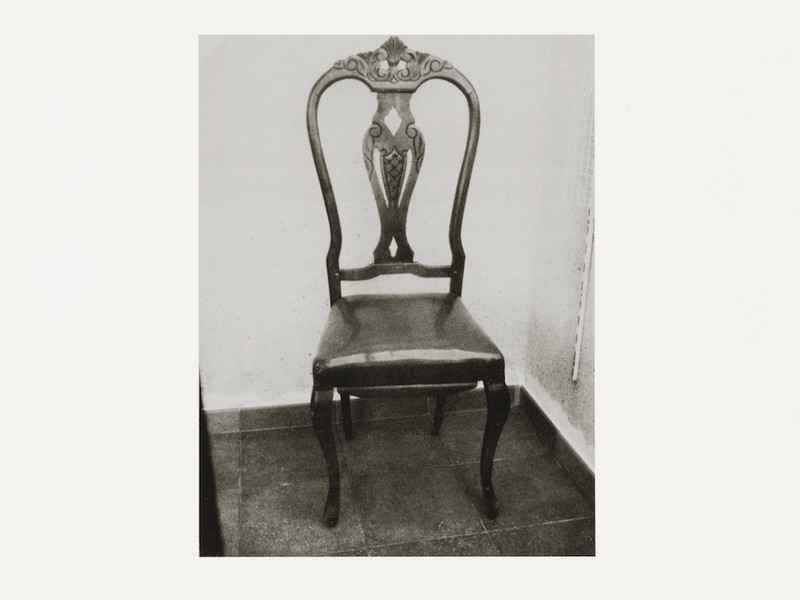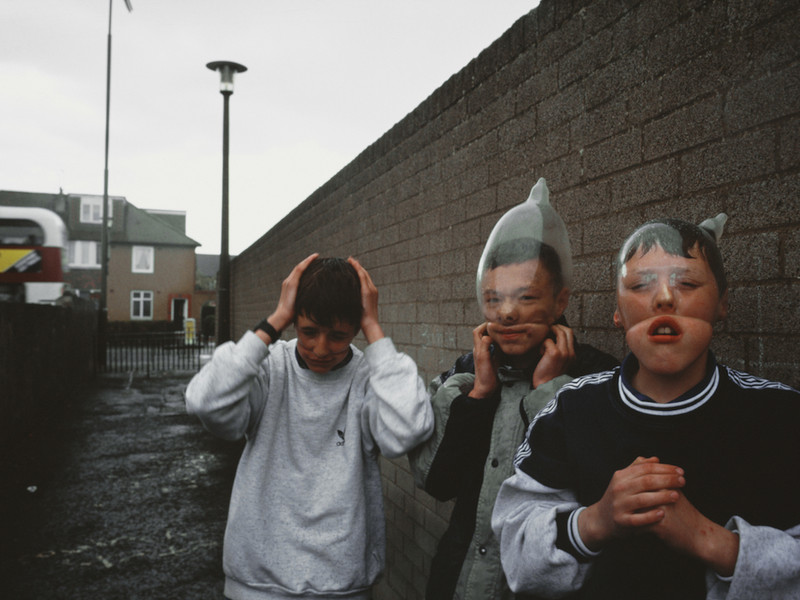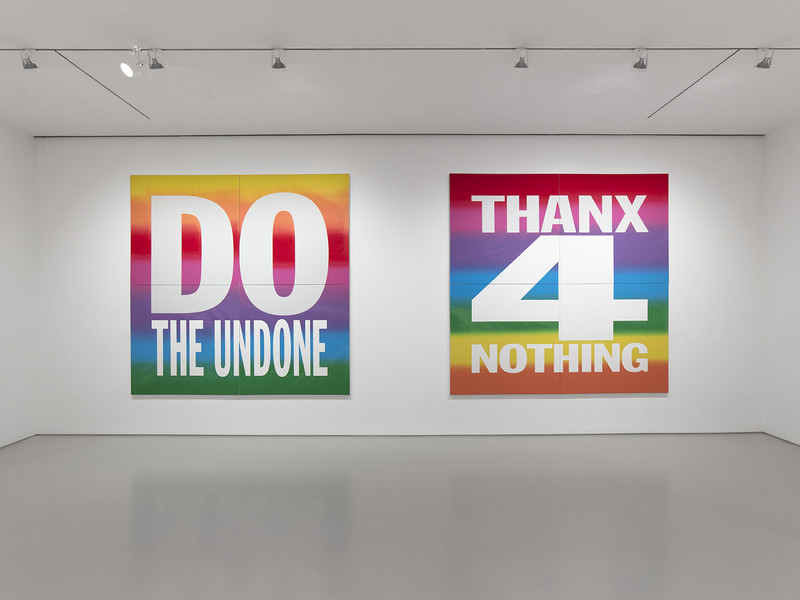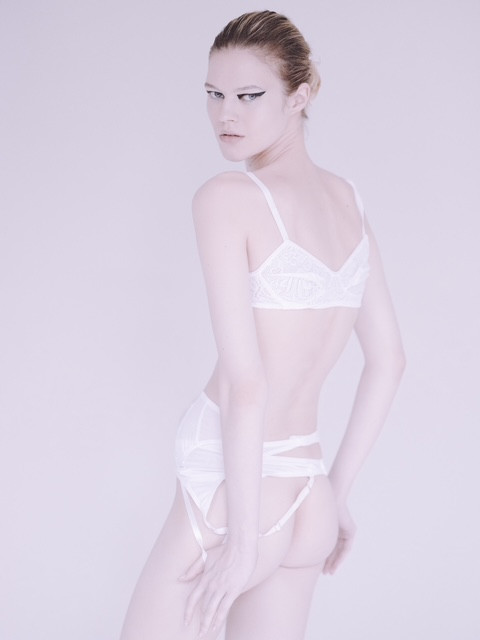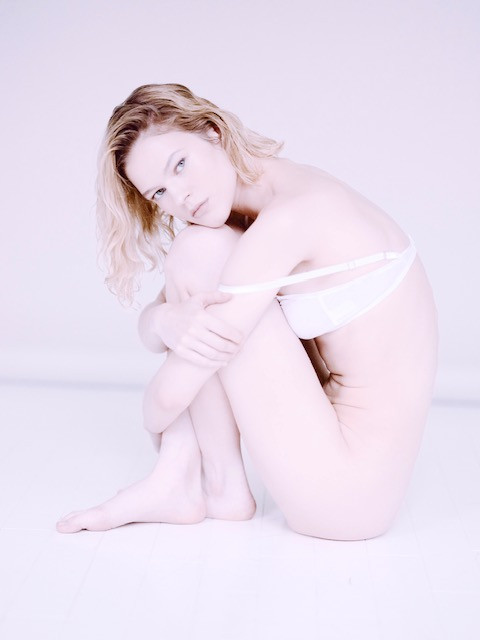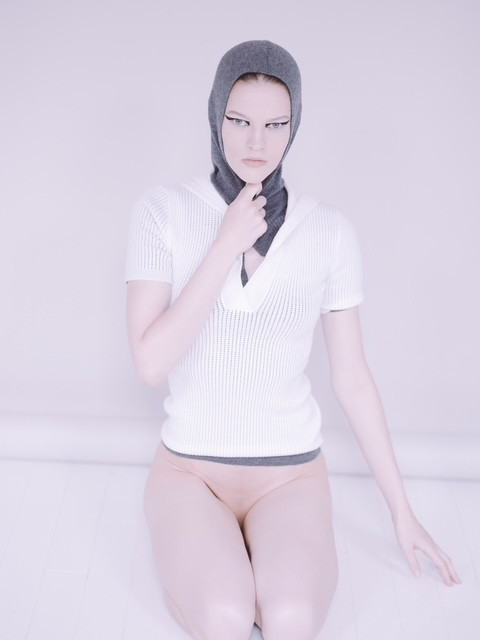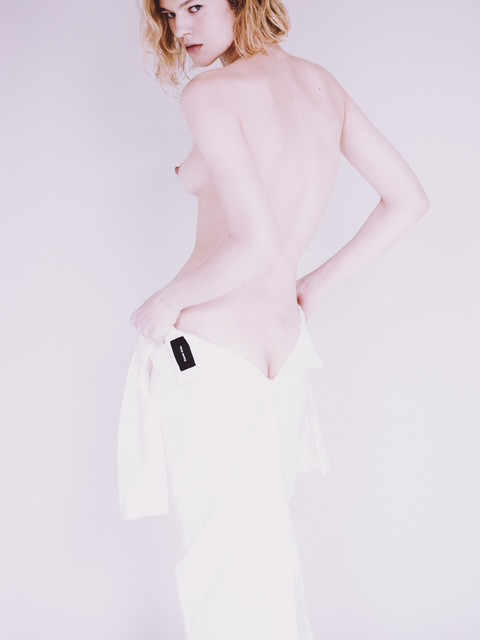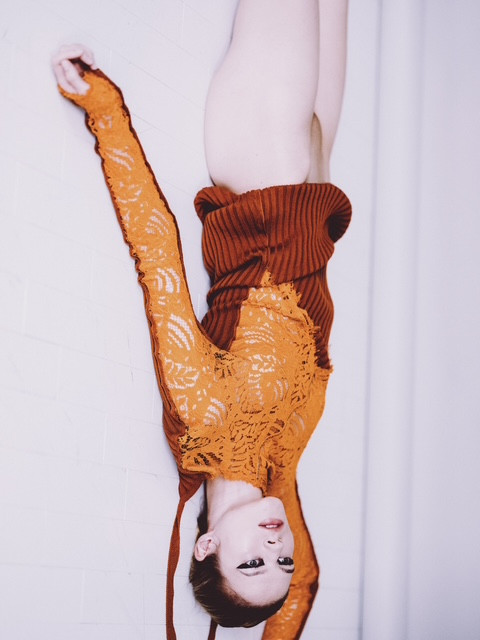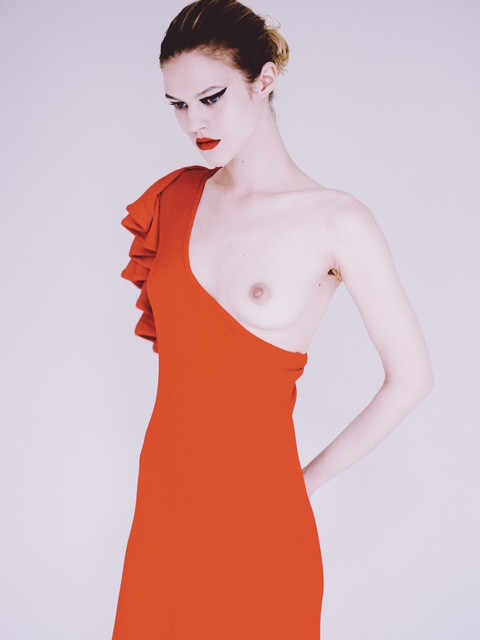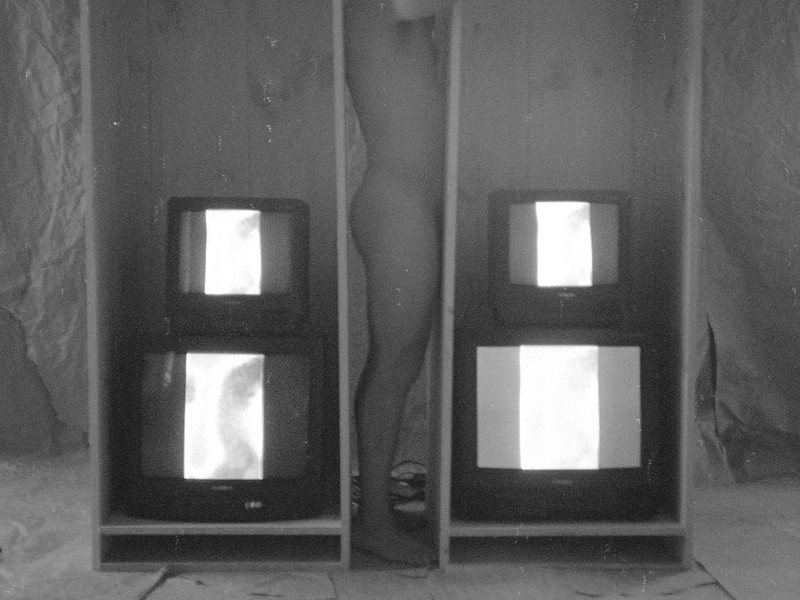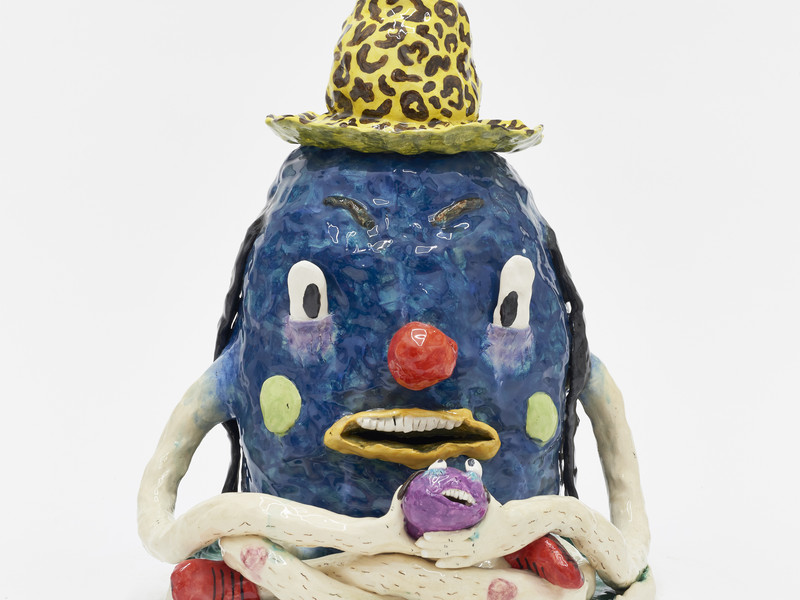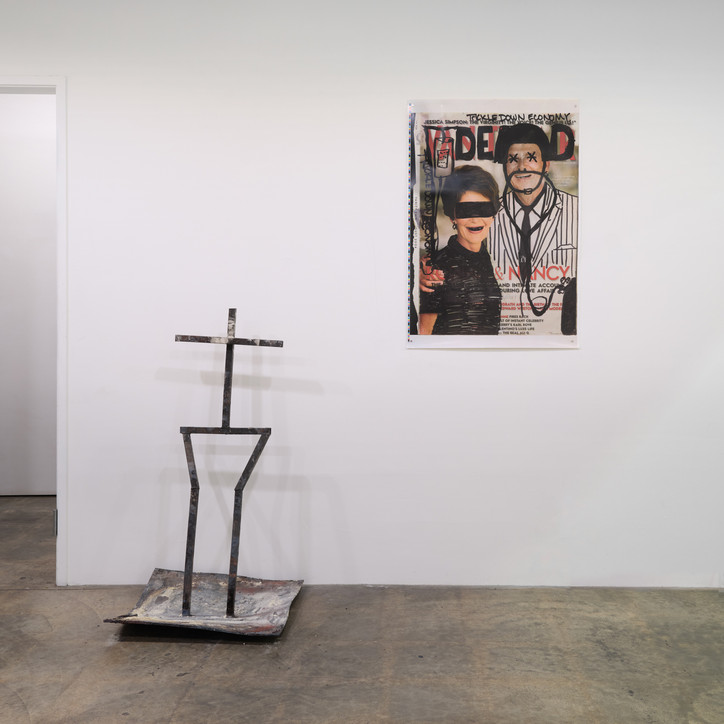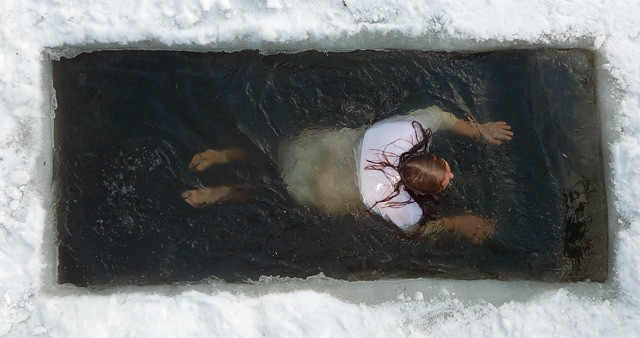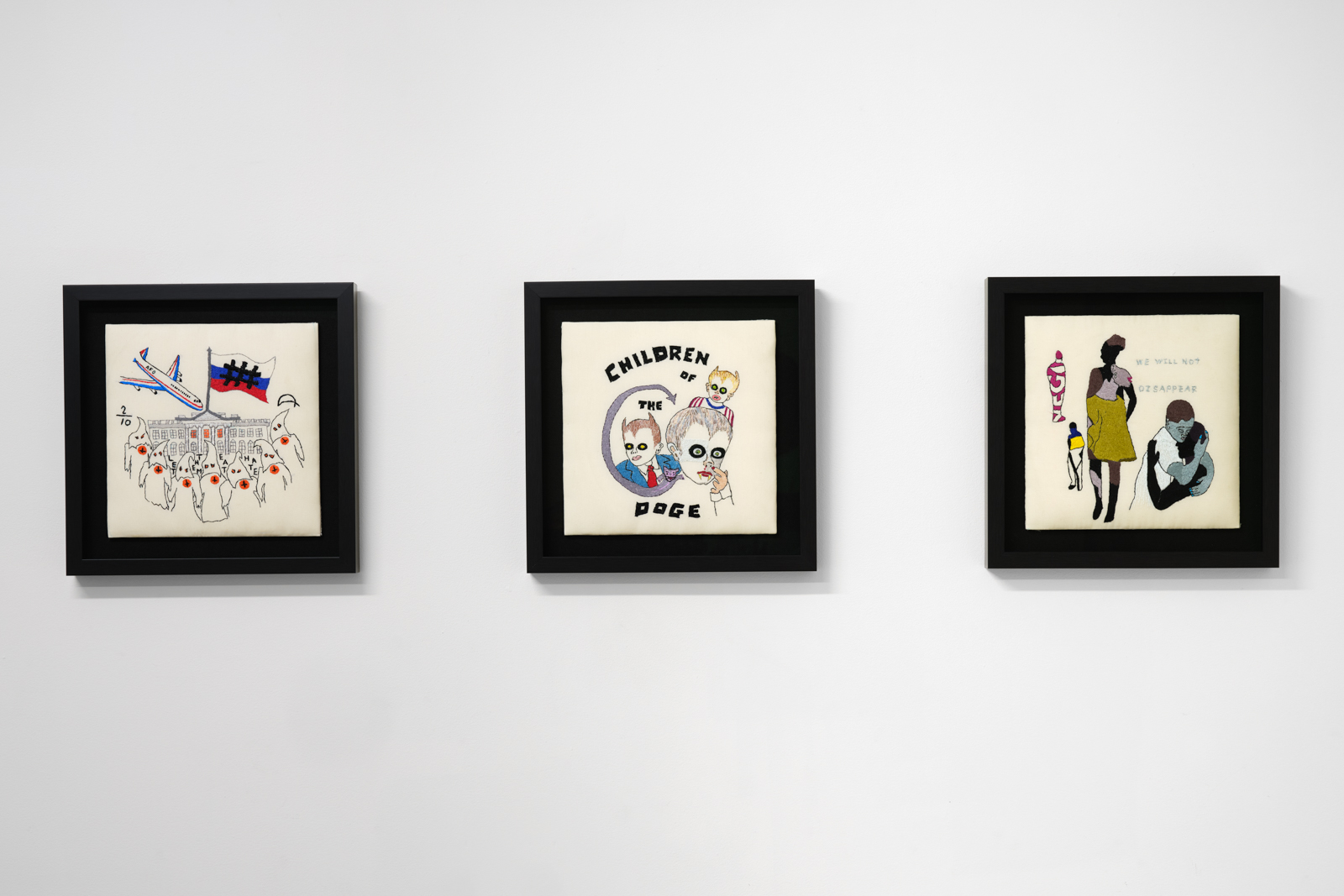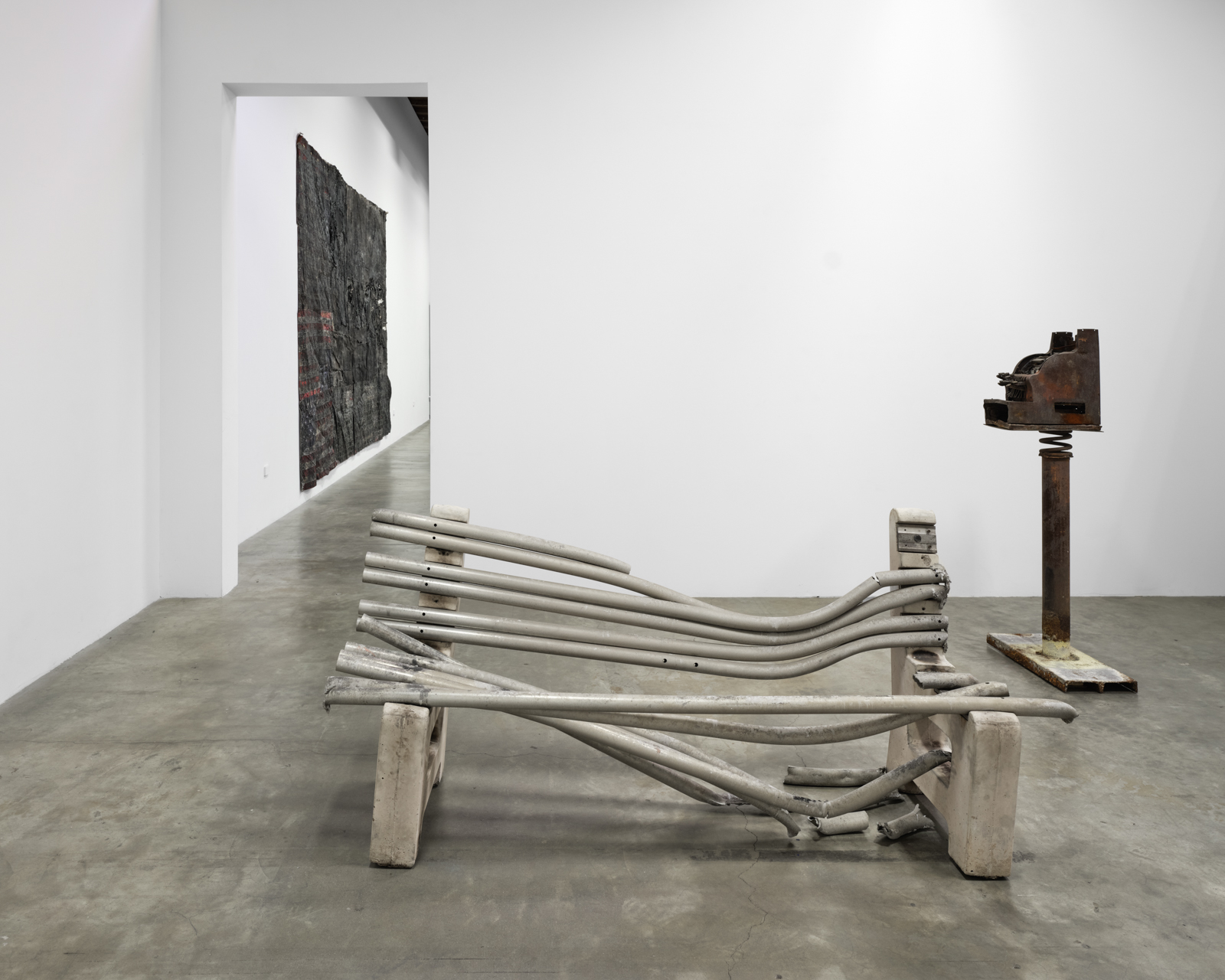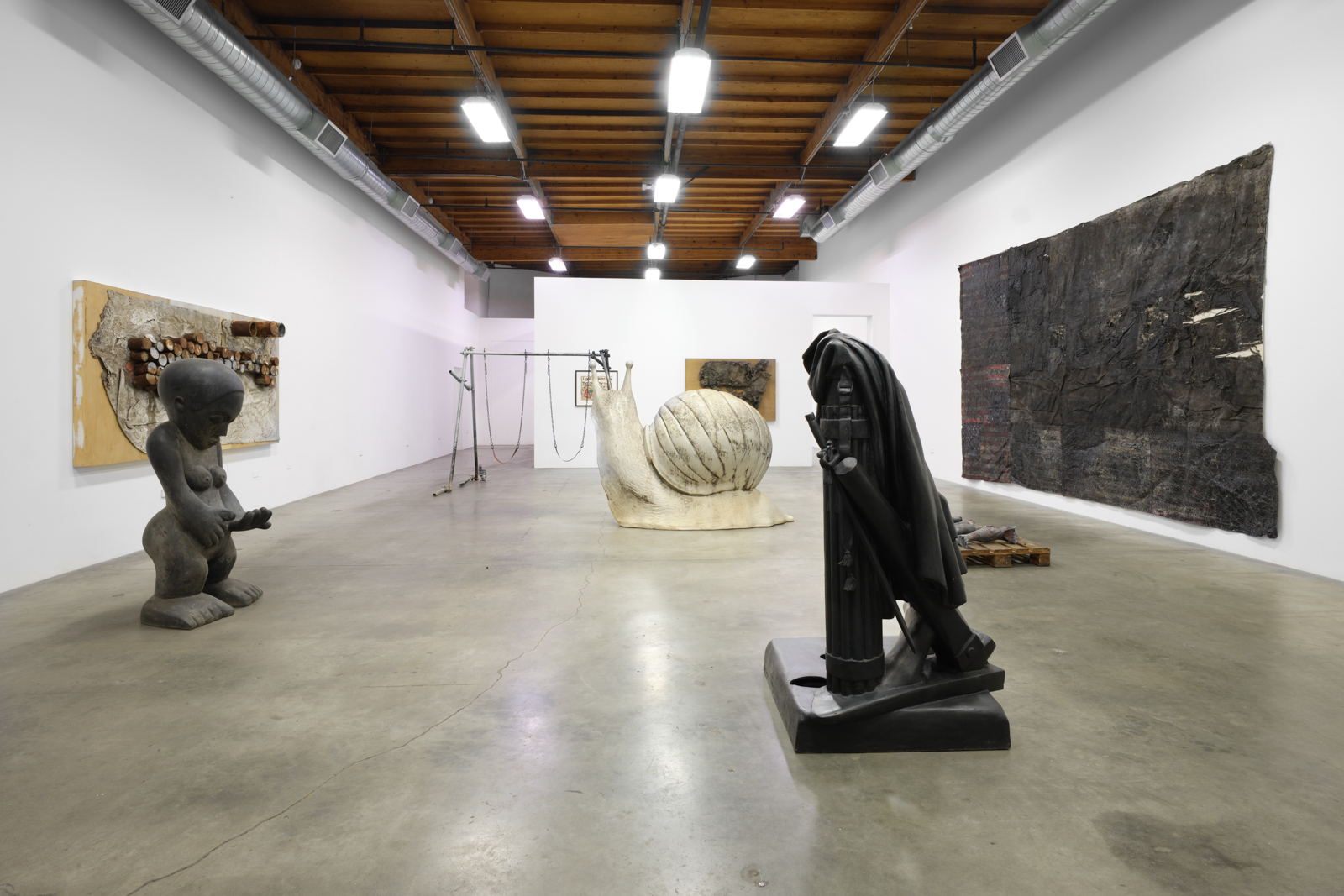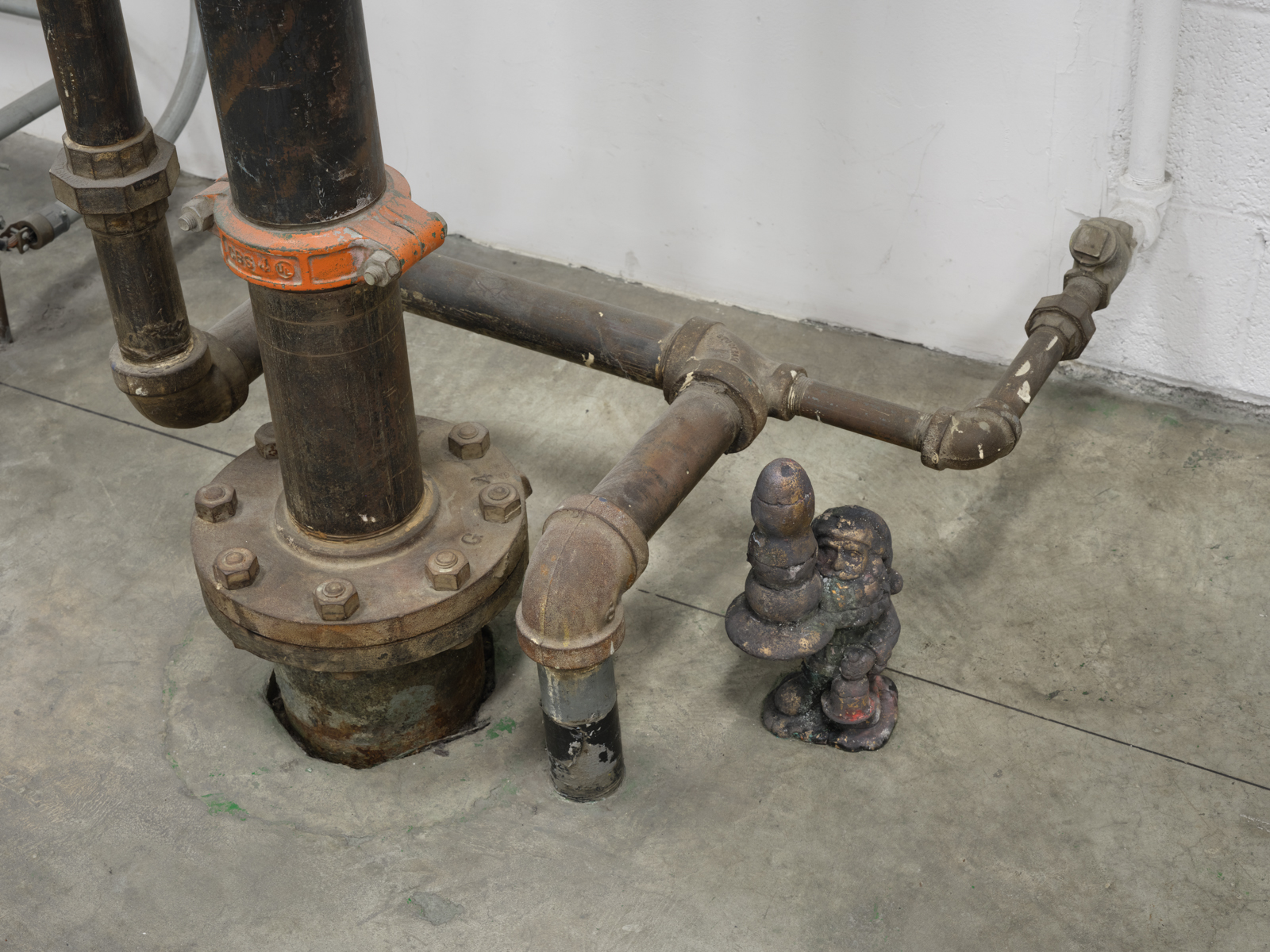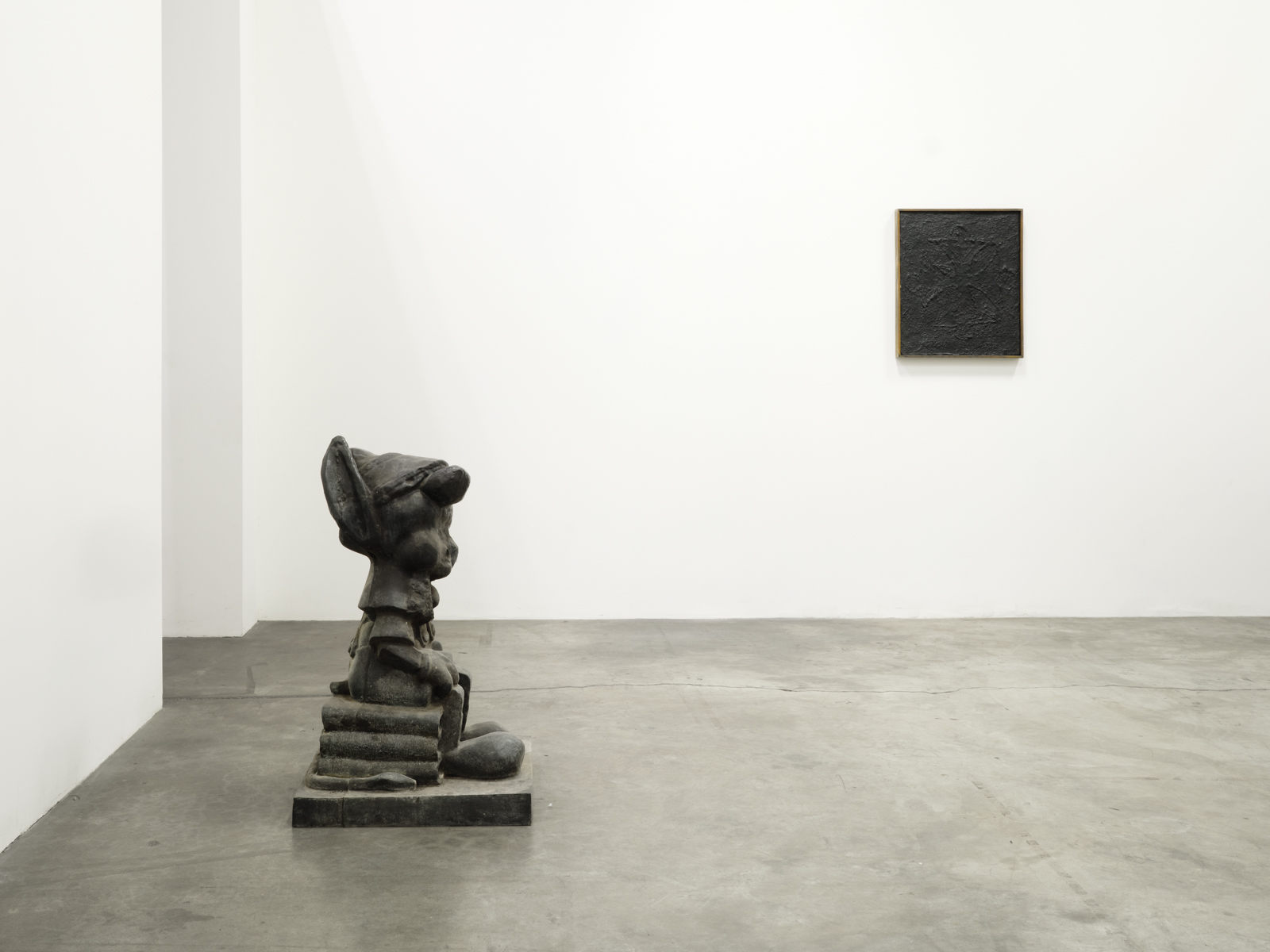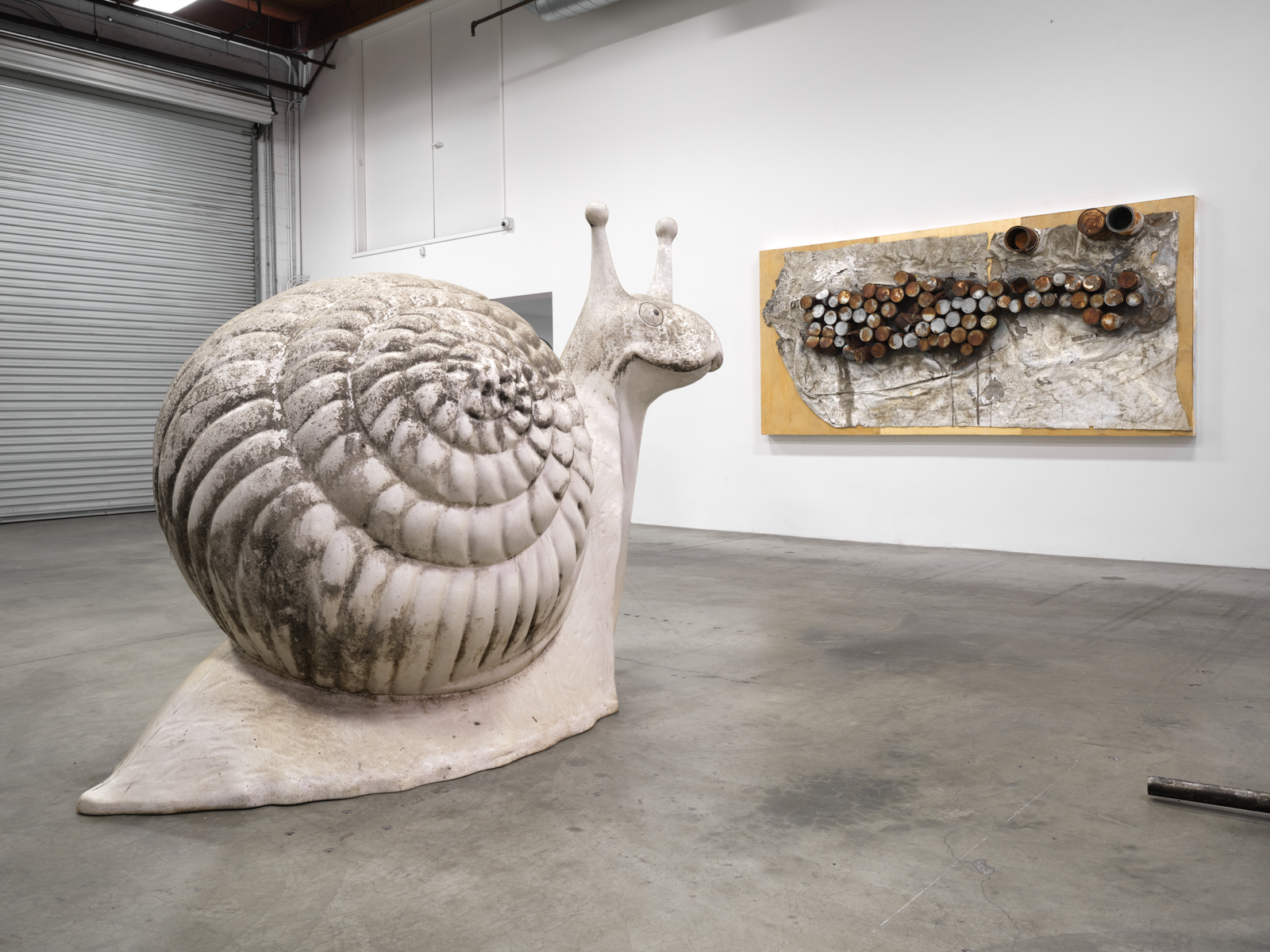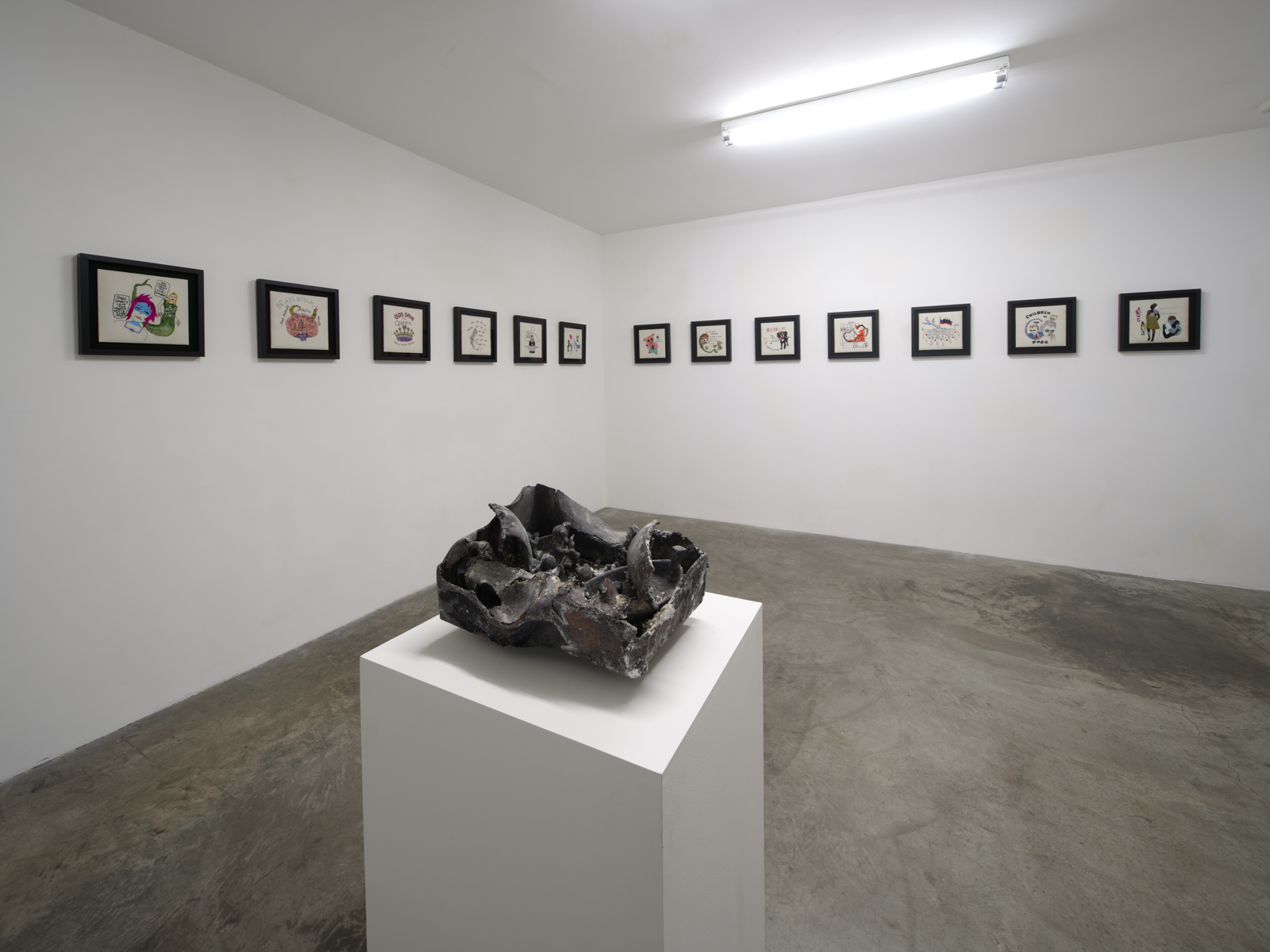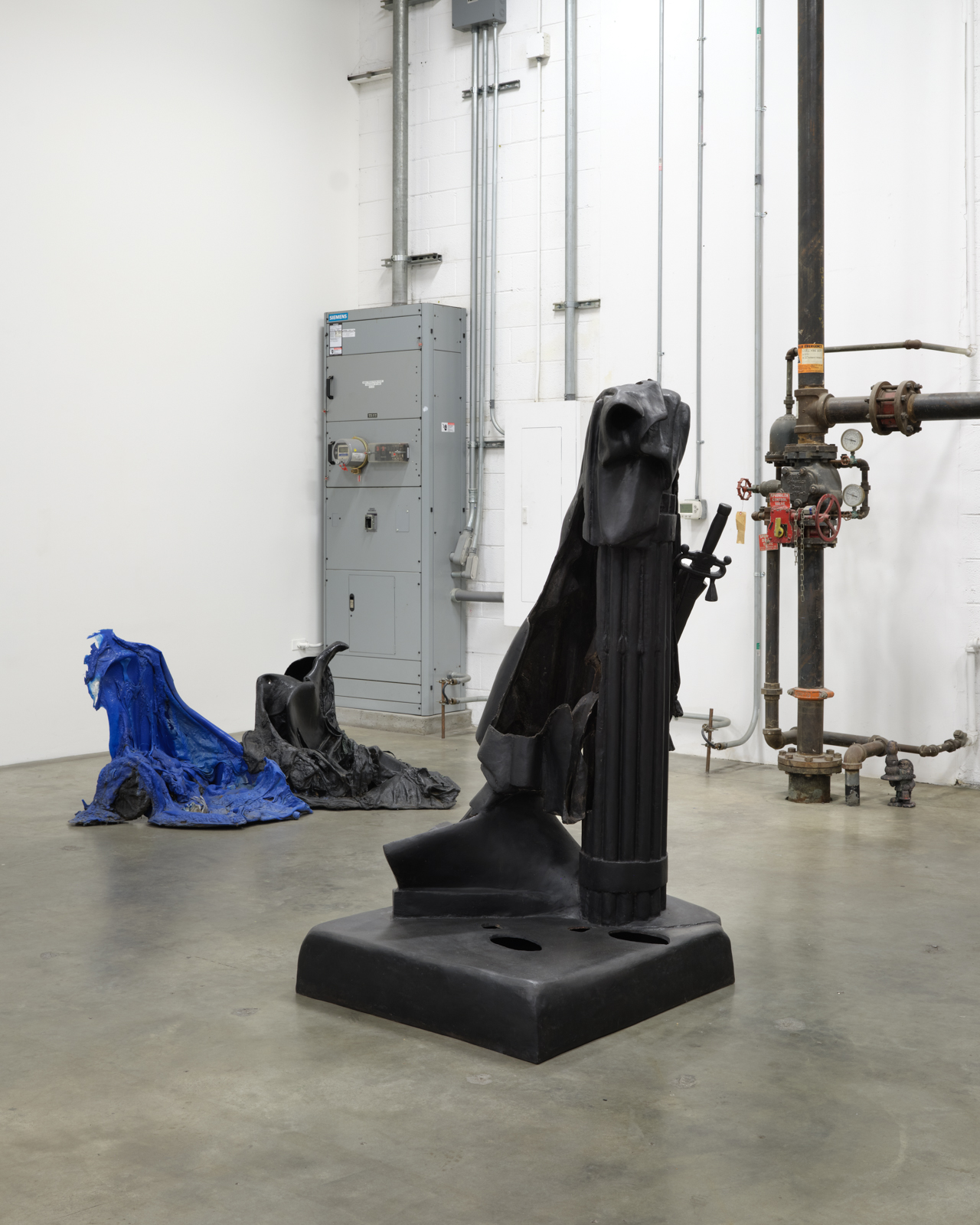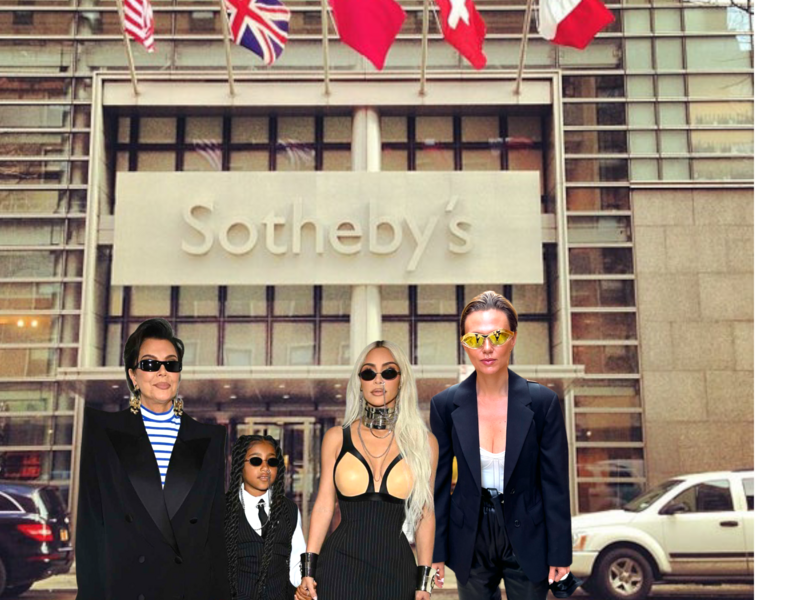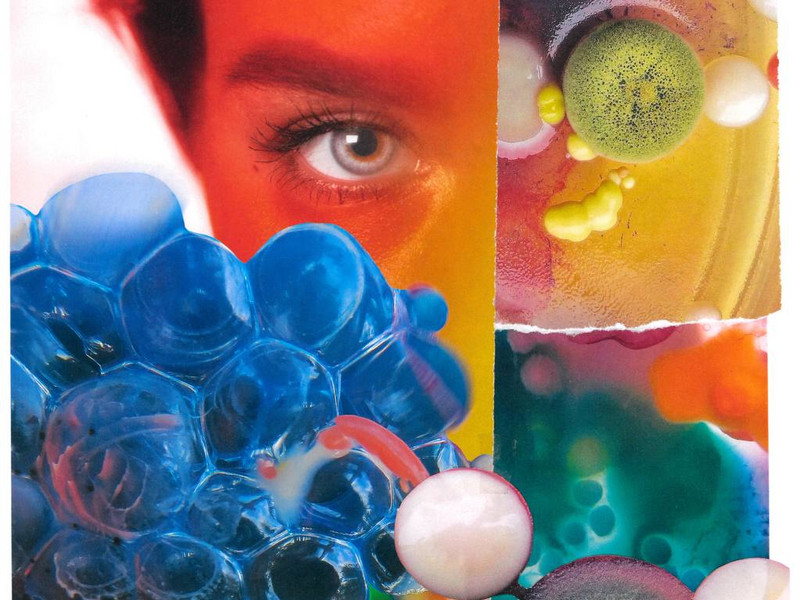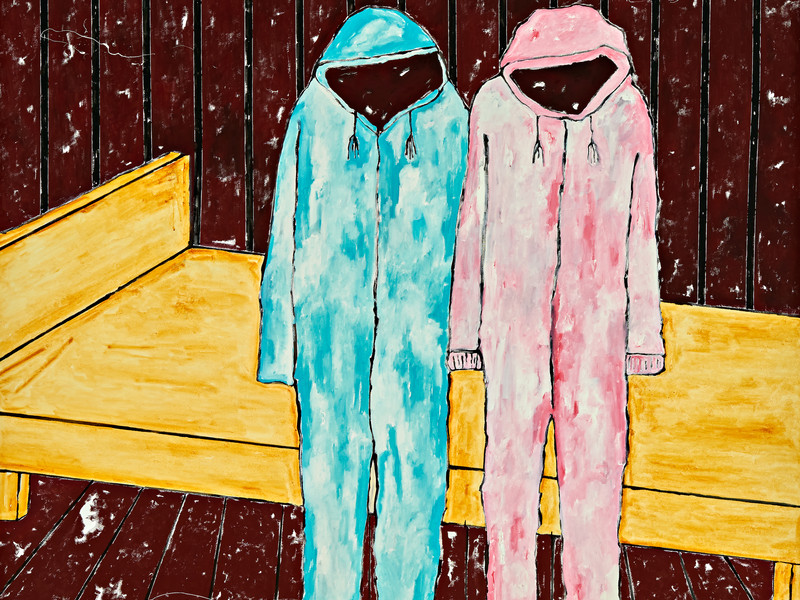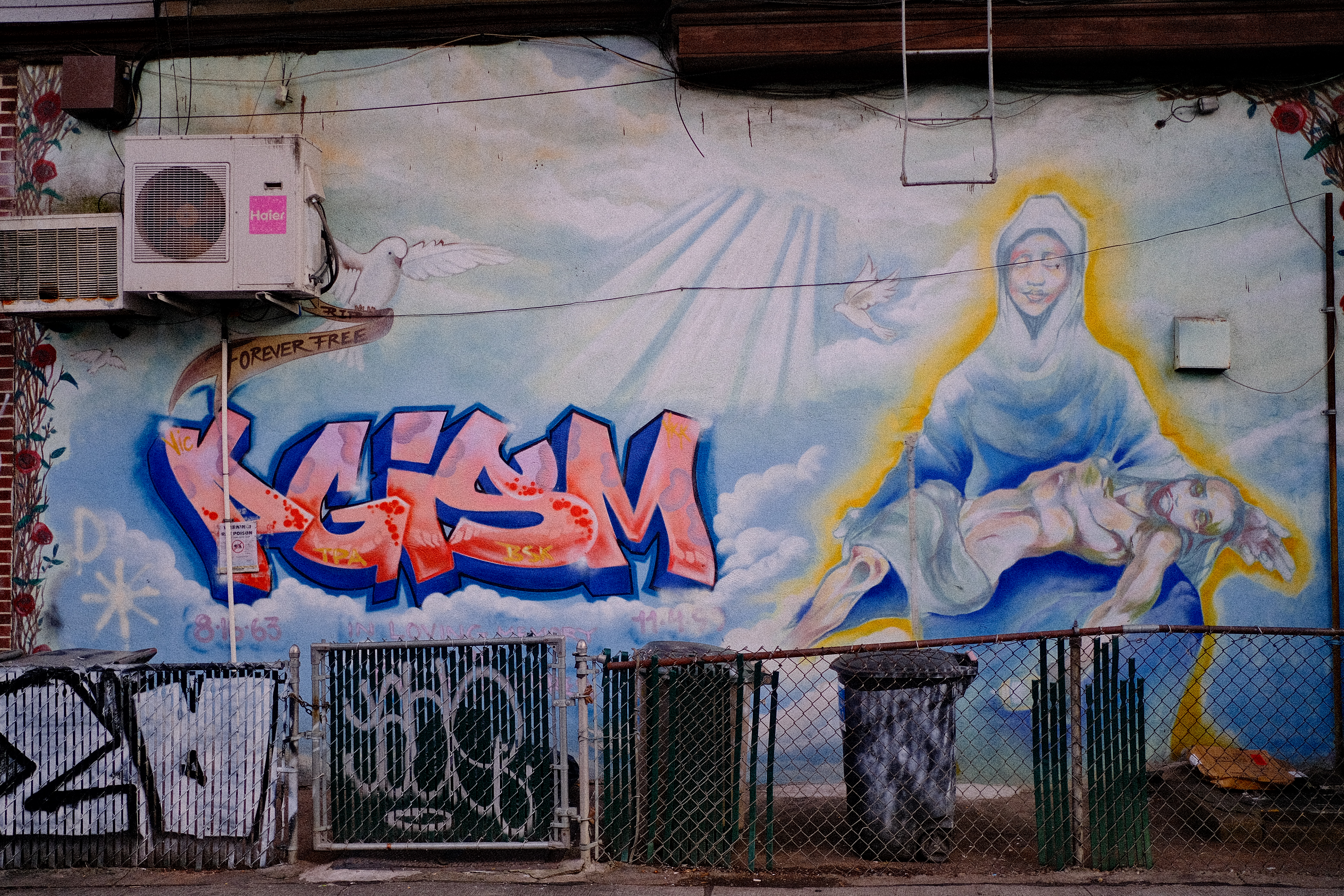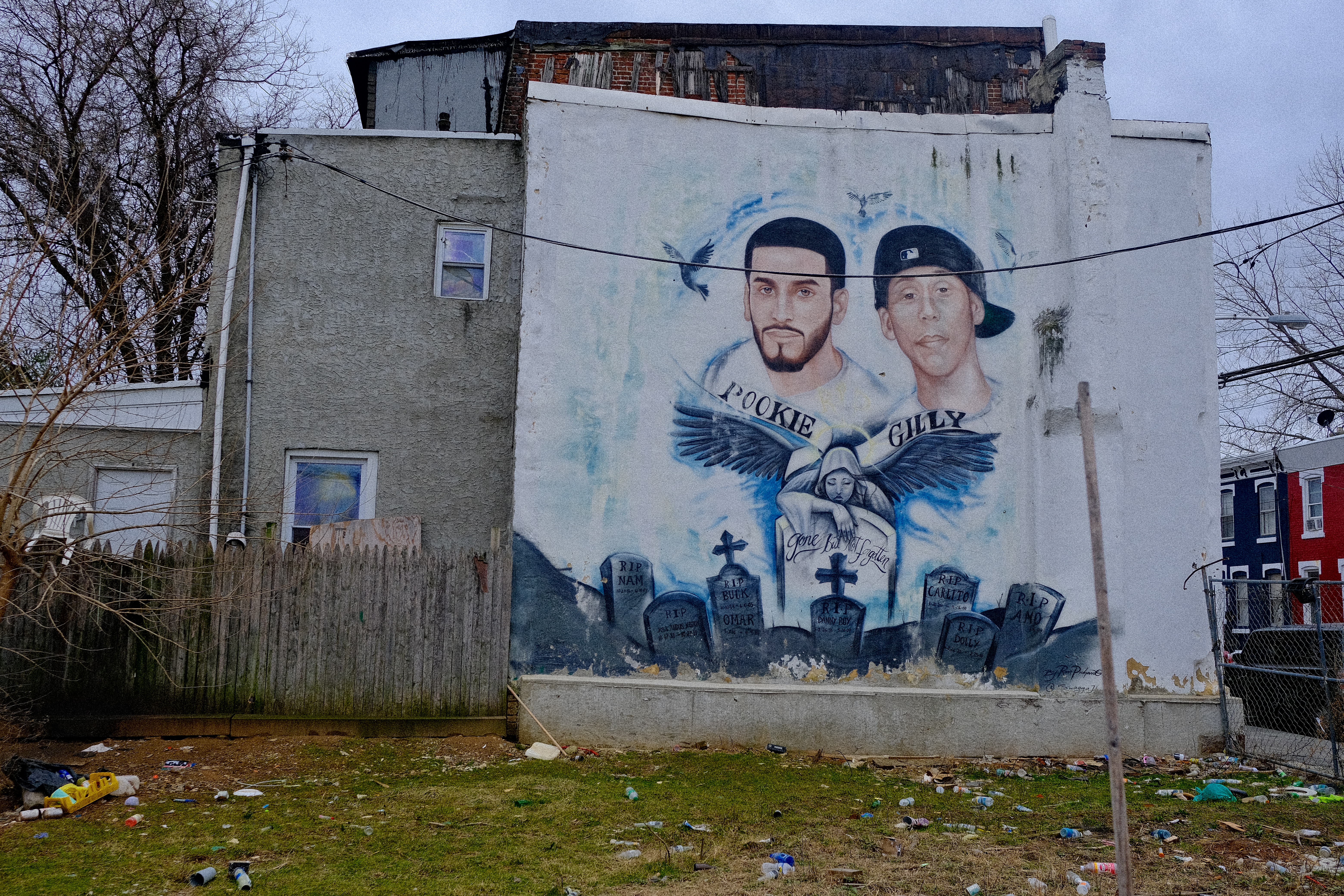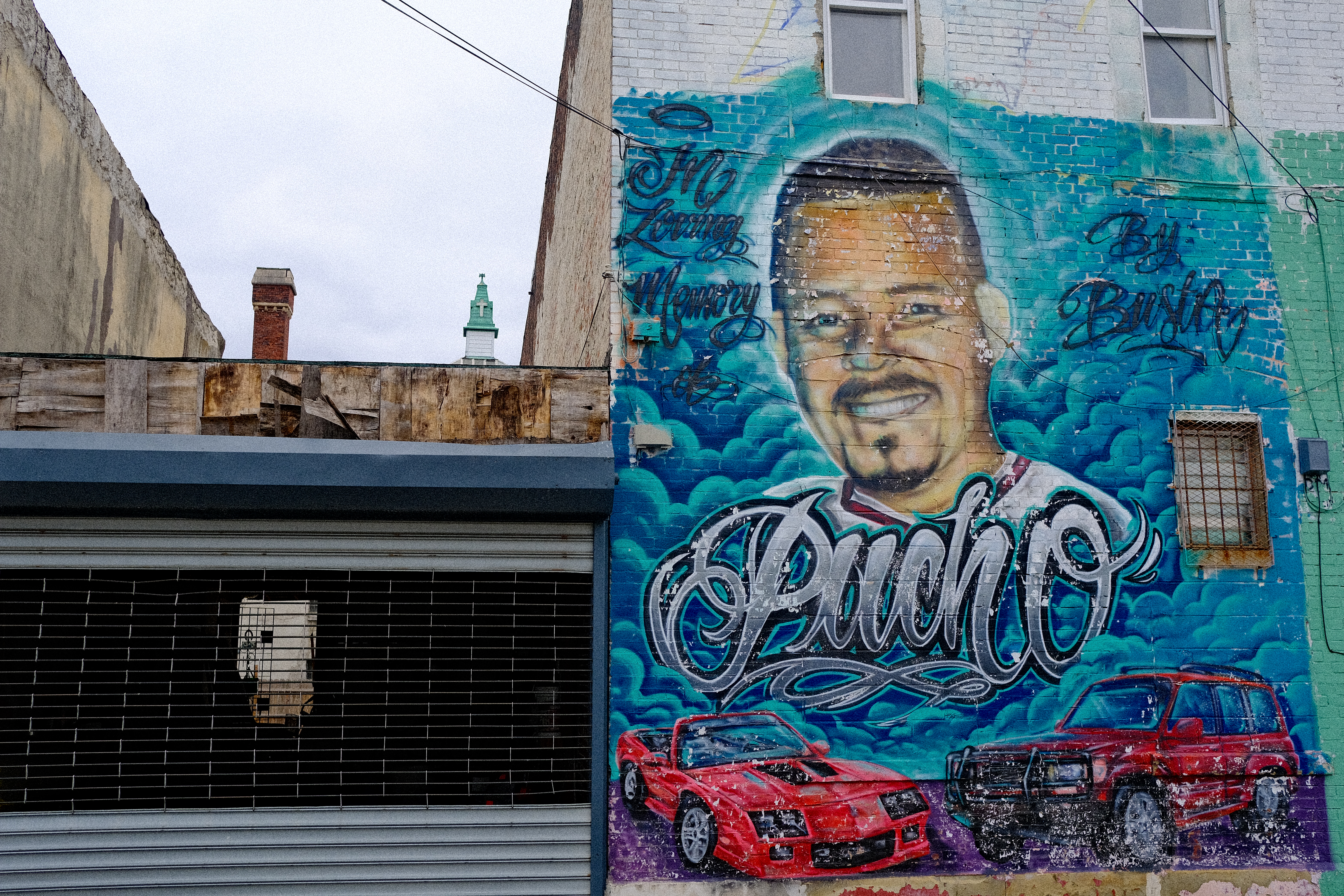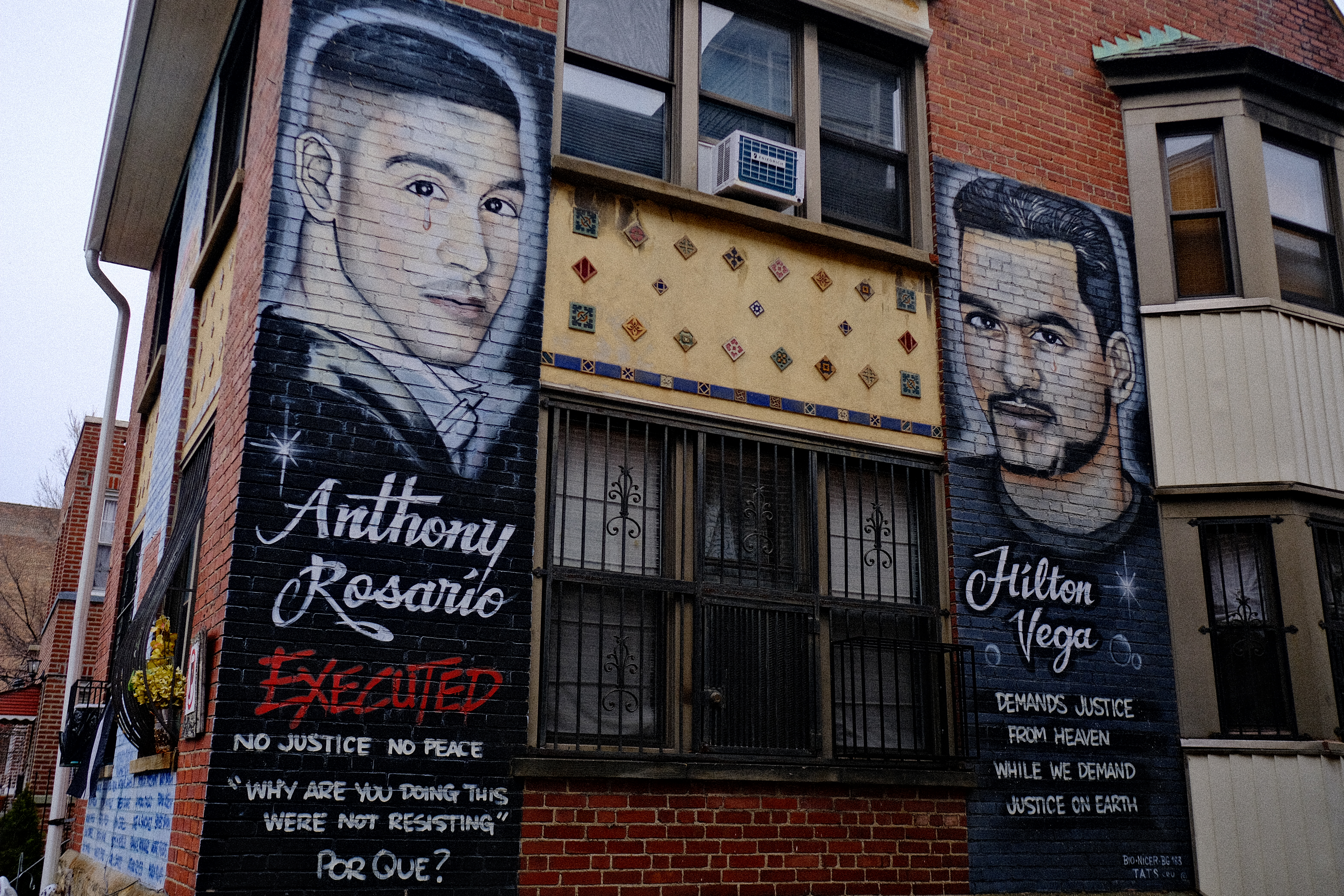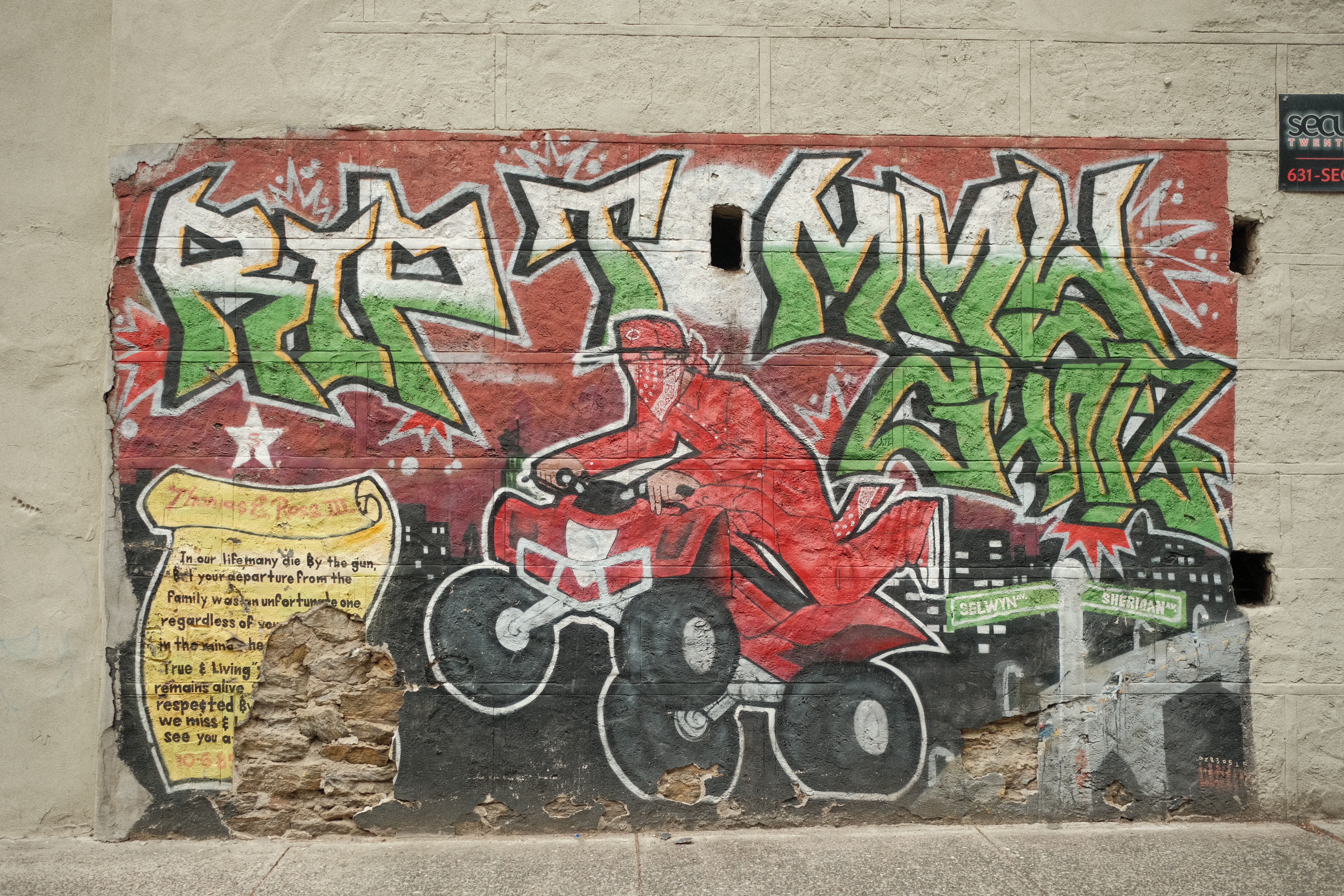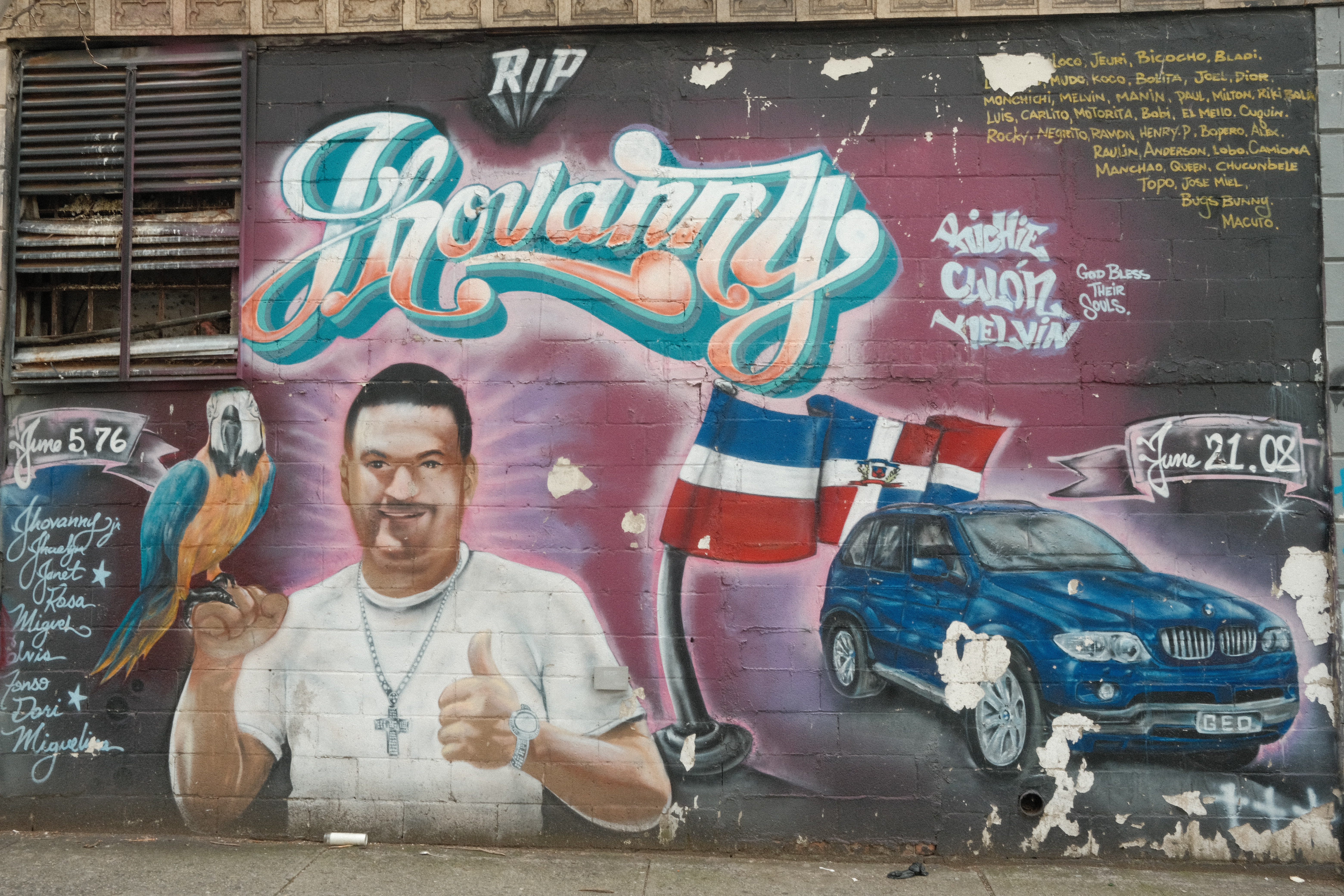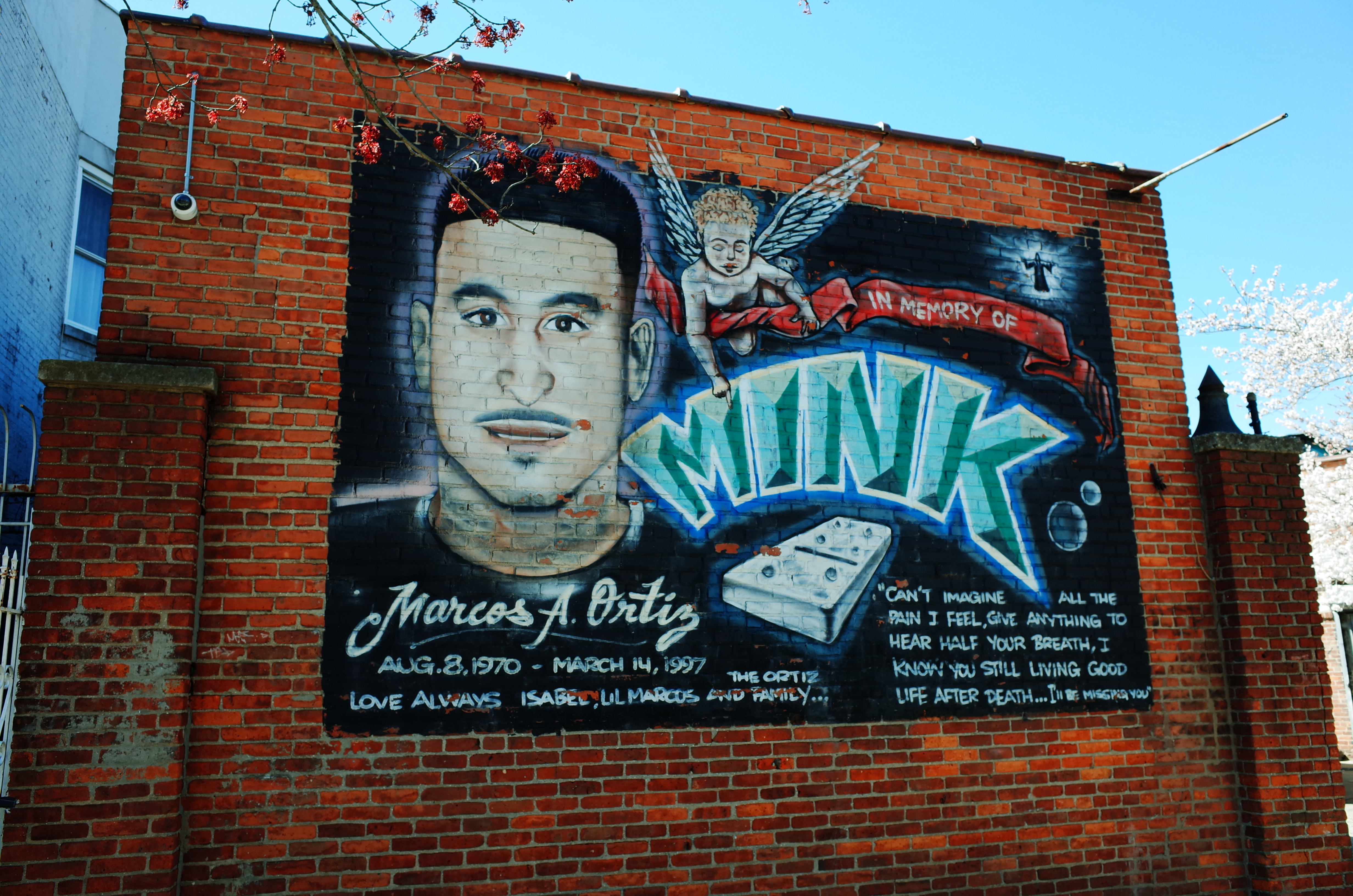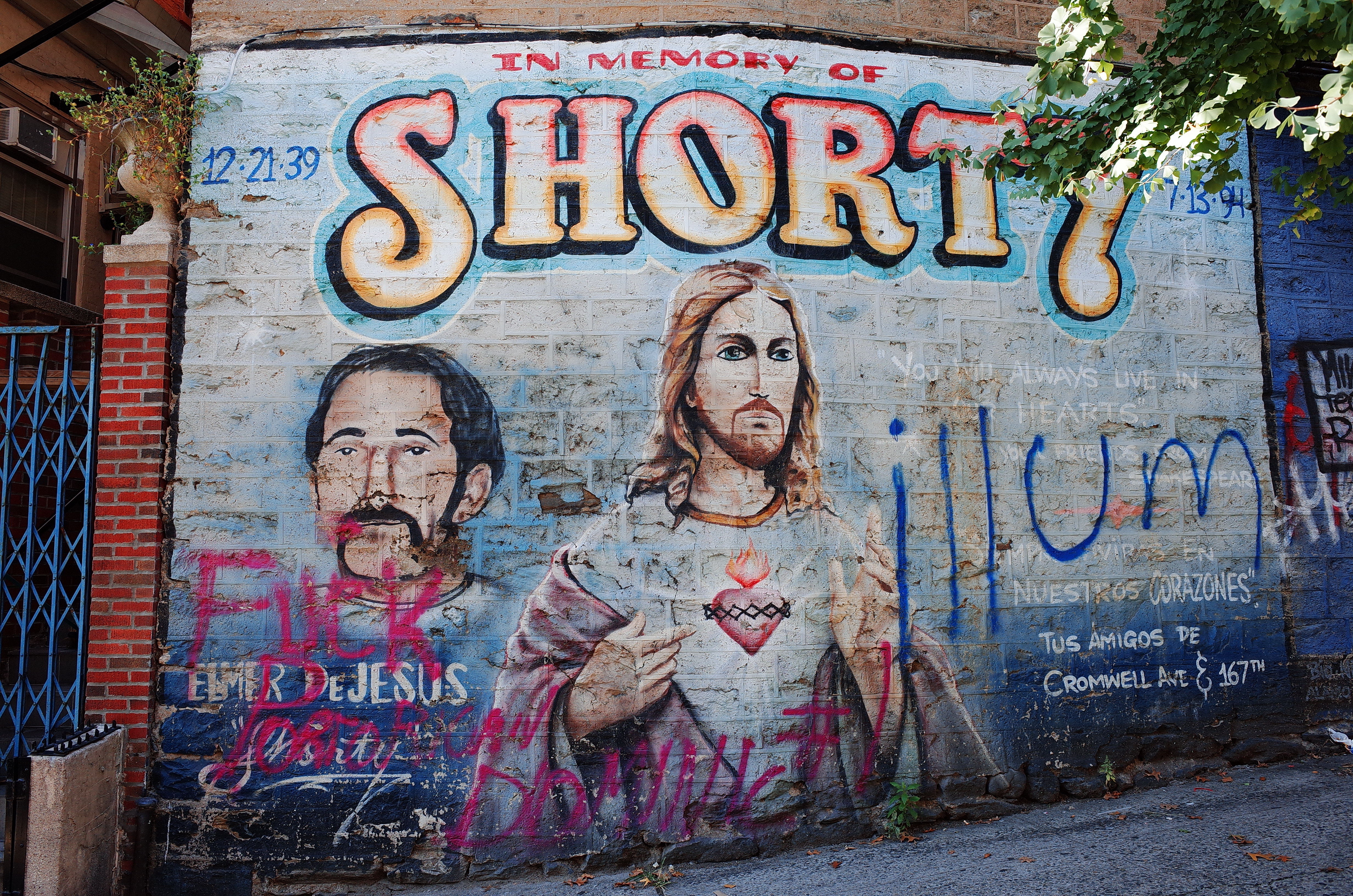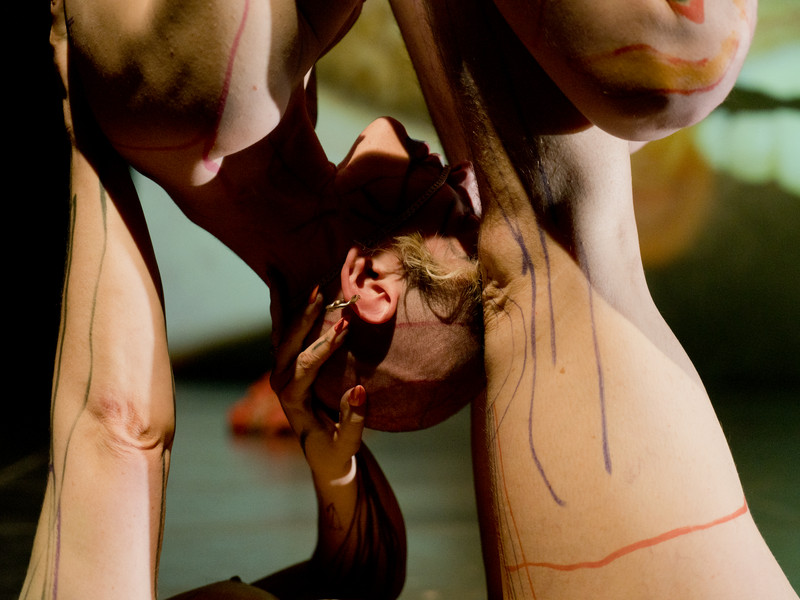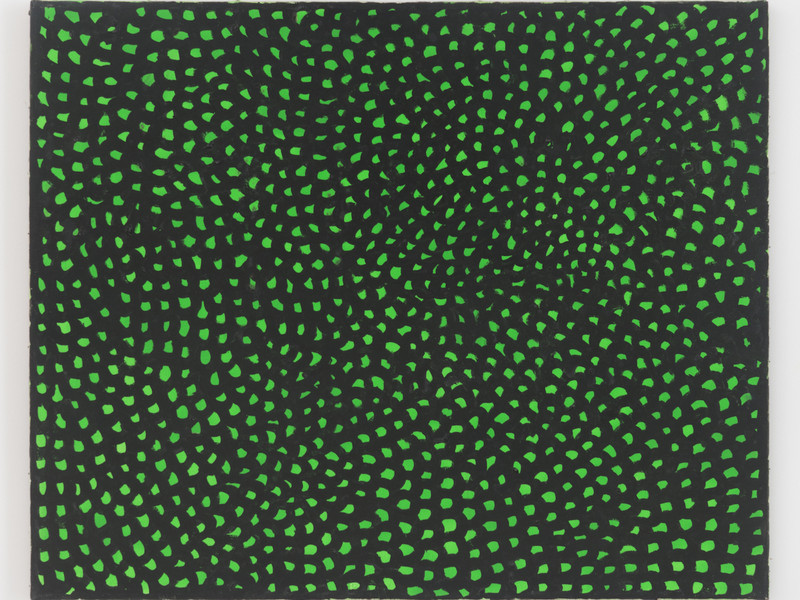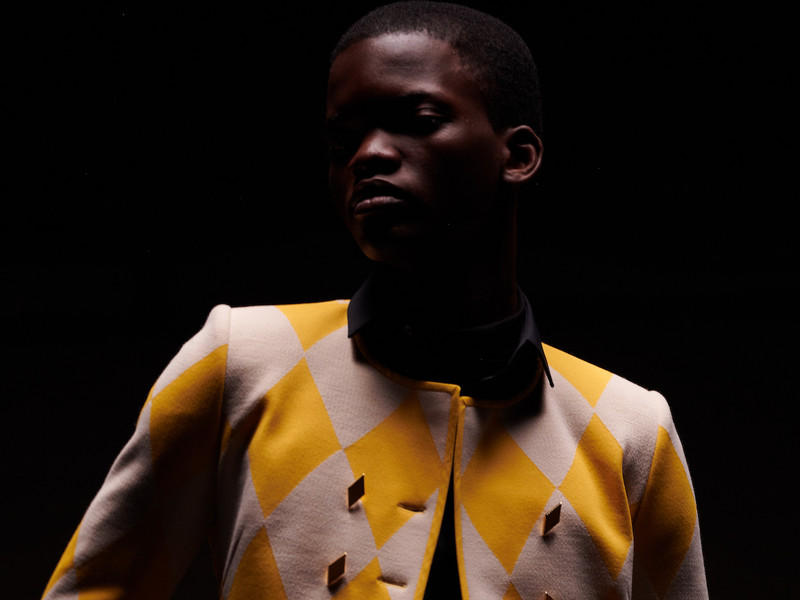Charles Hascoët Seeks Salvation Through Nostalgia
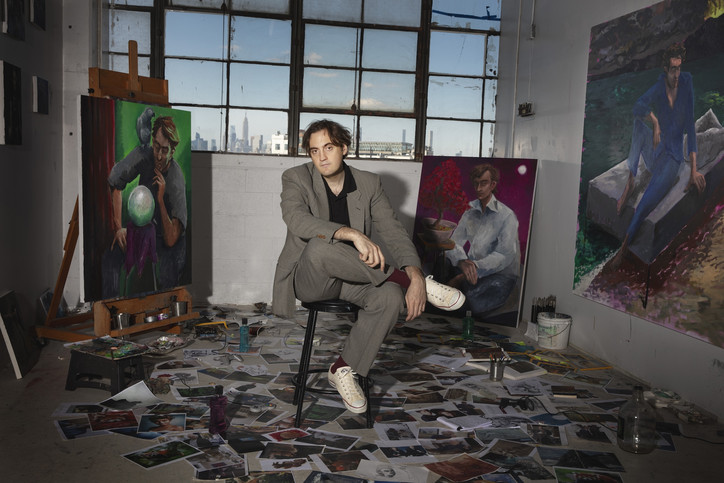
Kobayashi Maru touches upon climate change, toxic grind culture, and mass media, all through Hascoët’s personal experience. The first chamber in the three-room show centers on his earliest influences: vats of Listerine, recognizable through their iconic shapes alone, alongside PS1 controllers and CK One, that ubiquitous, idealistic unisex scent. Lemons shout out Edouard Manet and echo tennis balls, a nod to Hascoët’s pup and Perrotin’s unofficial mascot, Simone. Three sharks prove that Hascoët, and society at large, have conquered the fears fostered by films like Jaws. Collective maturity has taught us that sharks are critical to earth’s ecosystem.
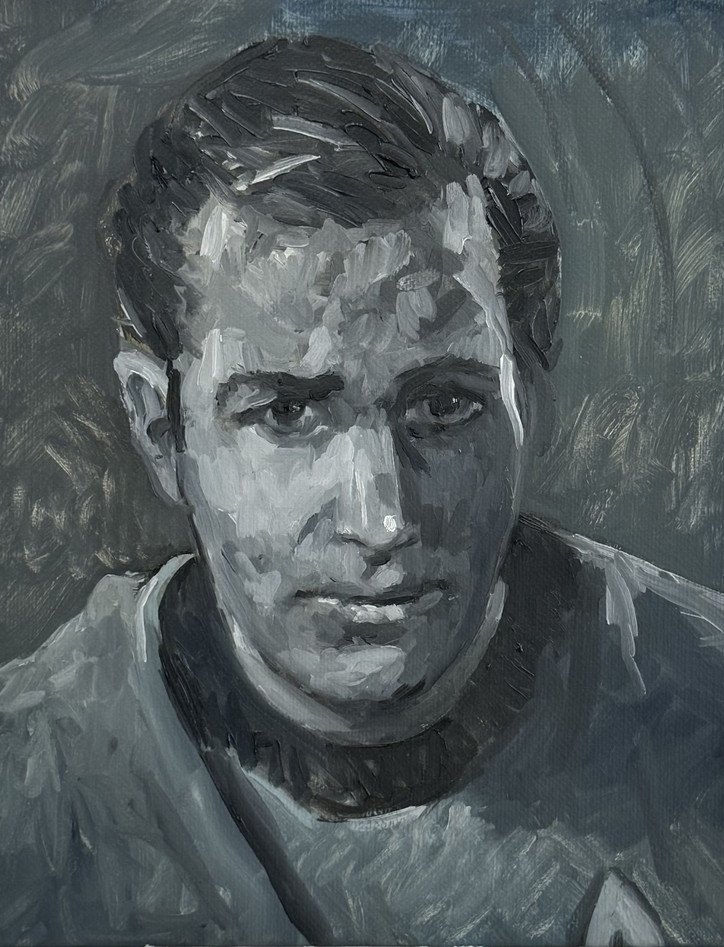
James T. Kirk, 2024
But Hascoët himself is the main character in the dream sequences that play out on larger canvases across the next two main rooms. In “The Waves,” Hascoët apathetically maneuvers raging seas in a dinghy, engrossed in his purple Gameboy. Those in the know will note he’s playing Pokemon, based on the yellow cartridge. Nearby, the show’s titular work depicts him sleepless, doom scrolling in a bed that straddles the tides and sands of a beach while a far off volcano erupts. The picture’s loose brushstrokes, underscored throughout by improbable pinks, contrast another self portrait across the way titled “Self Portrait with Brachiosaurus,” this time painted using a mirror rather than memory — with defined features and a rational color palette.

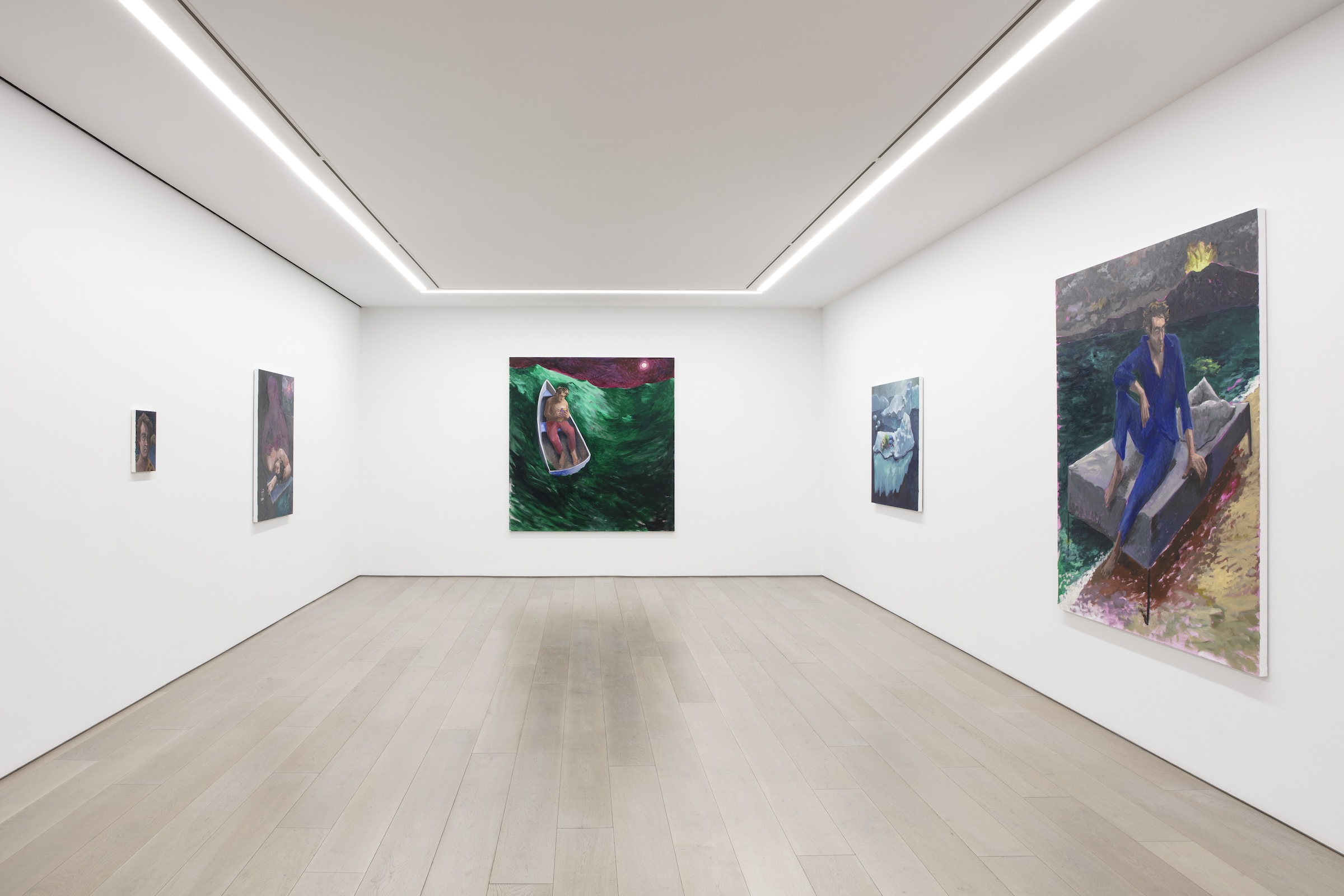
The real and imagined intertwine throughout. On walks to his studio, Hascoët discovered a store selling National Geographics for $1. Red pandas, dinosaurs, and polar bears have since entered his paintings, each bringing their own meaning. The advent of social media accounts attracting eyes with cute creatures has empowered red pandas to become the patron saint of a generation starved for joy. In “Red panda vortex,” this “kind of a new cat,” as Hascoët puts it, lounges in a magnolia tree inspired by springtime in Bushwick, on a branch jutting out over a water feature referencing Hiroshige. Elsewhere, Listerine makes one final appearance next to a red maple from his mother’s home, reimagined as a bonsai — or maybe it’s just a really big bottle of mouthwash. All depends on how you see it, much like the celestial bodies in “The Wave,” “Shiatsu,” and more resemble both the sun and moon. Hascoët’s not inclined to discern for you.
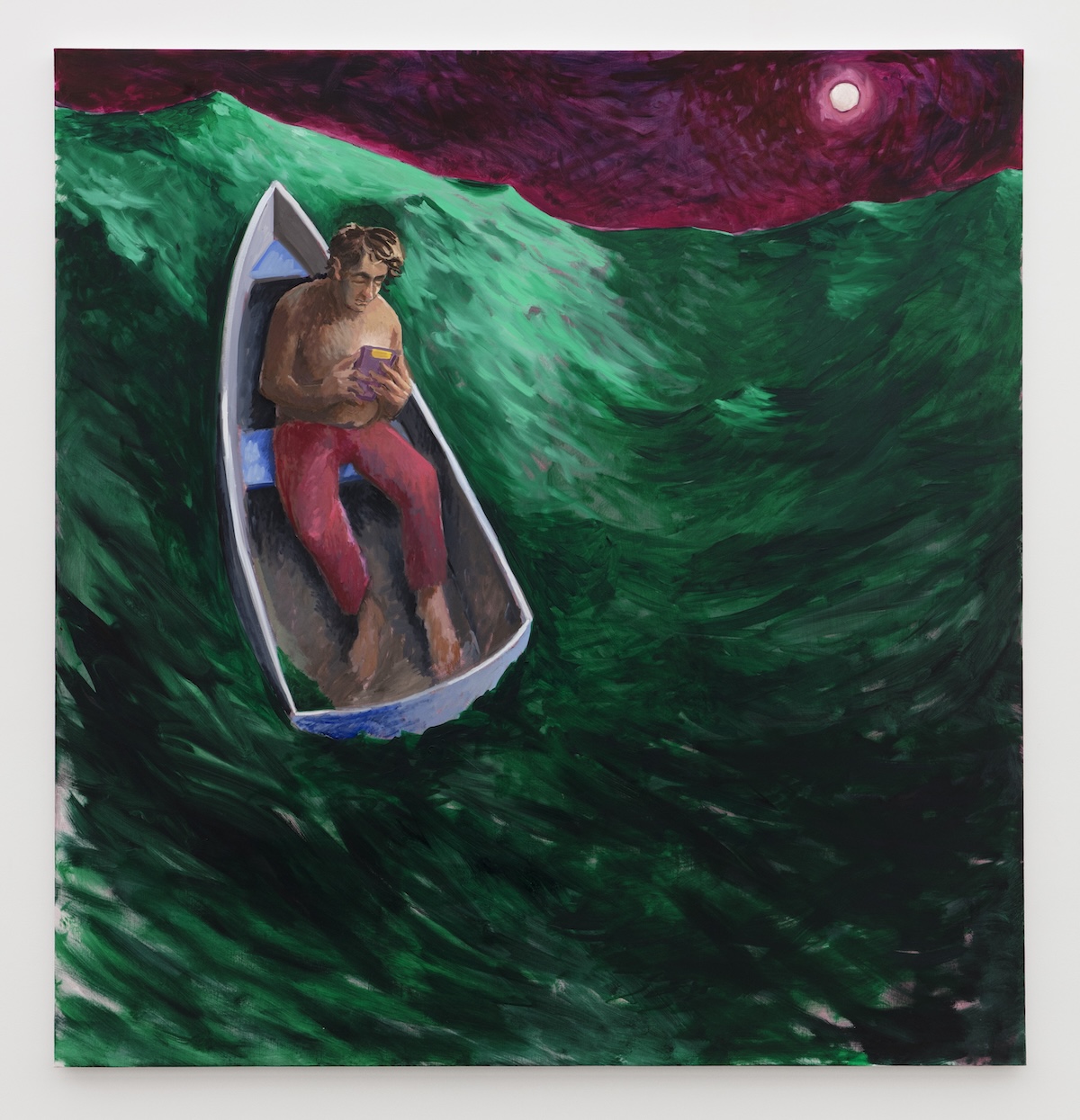
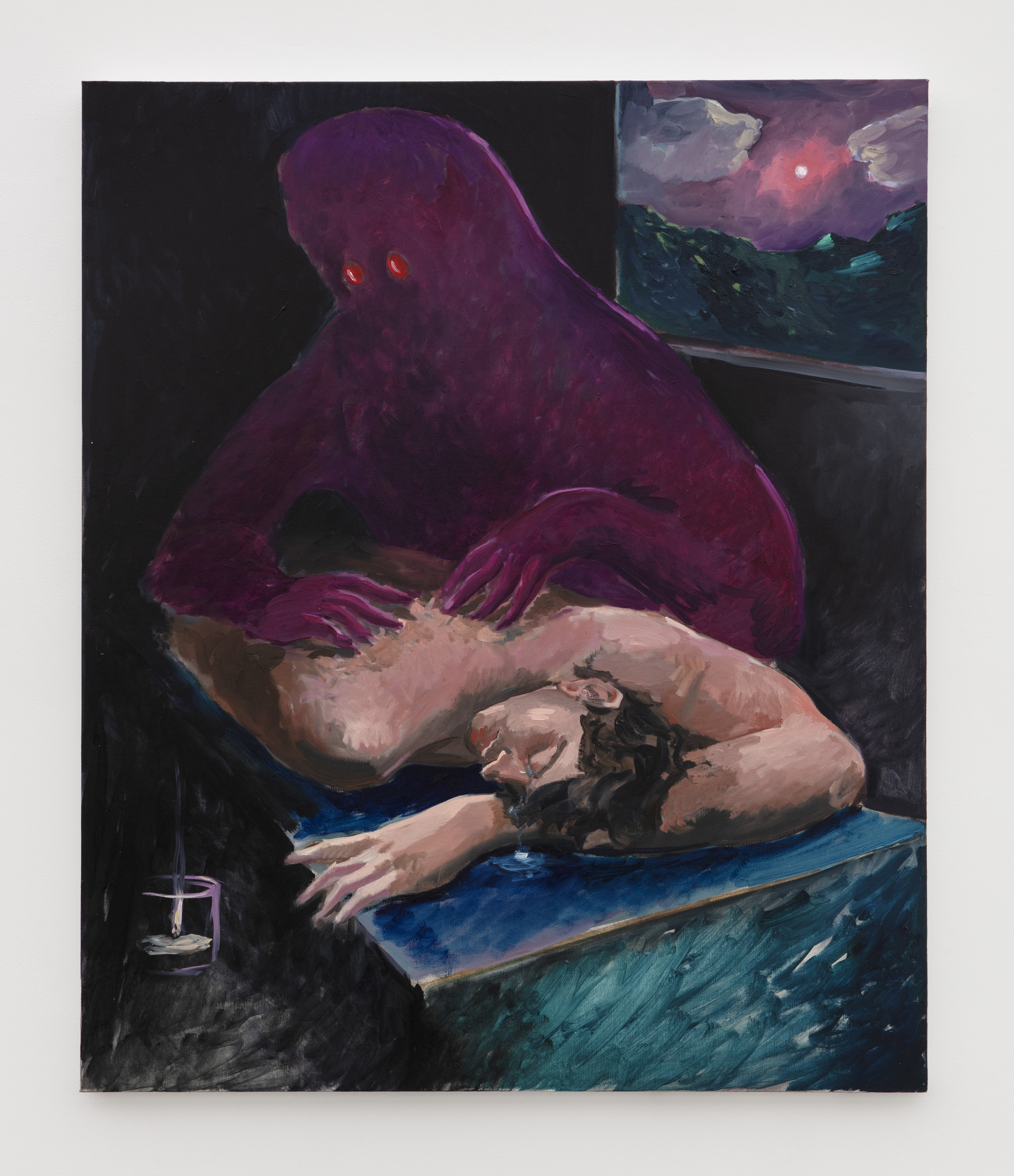
The Waves, 2024
Shiatsu, 2024
Ambivalence and hauntology are the moment. As millennials have started entering their peak purchasing power and professional influence, 90s culture has proliferated contemporary art. It’s not a fad, but a mainstay — as emphasized by the art historical traditions Hascoët has translated such relics through, and rendered them alongside. He sympathizes with the desire for comfort in these uncertain times, but believes such motifs belie a deeper shift. “In the late 19th century, Nietzsche said ‘God is dead,’” the artist mused. “At the same time, Baudelaire came up with the idea that if God is dead, there is something to replace it. Why not poetry?”
Take it from both world wars — that didn’t work. “Then pop culture came along in the second part of the 20th century,” Hascoët said. “Poetry was quickly replaced.” Now, pop culture’s been used up. Rather than new stories, there’s a new Star Wars every six months. Kobayashi Maru doesn’t propose a solution, but honors Hascoët's diversions, like Polish-American techno DJ Bogdan Raczynski, who appears in a “Rave ‘Till You Cry” t-shirt. “I think it's a good way to implement poetry,” Hascoët remarked. “He would rip your mind open and then pour in some nice tunes.”
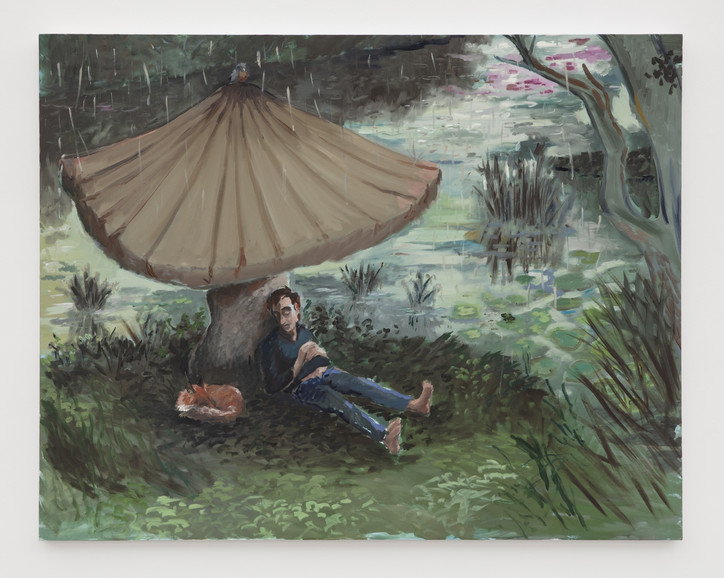
Cottage-core, 2024
Memes appear too. “Cottage-core” depicts Hascoët in his take on the “stop glamorizing the grind” meme. In the same room, Hascoët ponders his orb, right by another luminous scene based on the time Hascoët took Simone to a witch in Brittany to help her recover from getting spayed.
In fact, Hascoët’s grandmother was one of those witches, but when his father and uncle chose practical paths, the intergenerational chain shattered. Hascoët’s picked it back up again — and not without perfunctory tribulations. He failed at his first attempt to get into the École des Beaux-Arts, and heeded his father’s recommendation to try law school. Hascoët dropped out after two years, enraging his dad, then got into the École des Beaux-Arts courtesy of his renewed vigor for painting. Kobayashi Maru commemorates a decade since his graduation.
Hascoët believes the personal branding that characterizes Instagram and TikTok means the self will perhaps become society’s new god. His work has seized on that idea too, whether he wholly realizes it or not. While alchemizing disparate inputs like magazines, photos from friends, and his own observations, Hascoët only lets a painting leave his studio if he feels like it has soul. Interestingly, he says that without an element of self-portraiture that has nothing to do with the imagery itself, an artwork reads as vain. Even though he doesn’t appear in “Paleo-core,” the last work he made for this show, Hascoët sees himself in it. Whether he’s the T-Rex pissed off about the end of the world, the worried Brachiosaurus — or both — he still hasn’t decided. It’s up to you.
